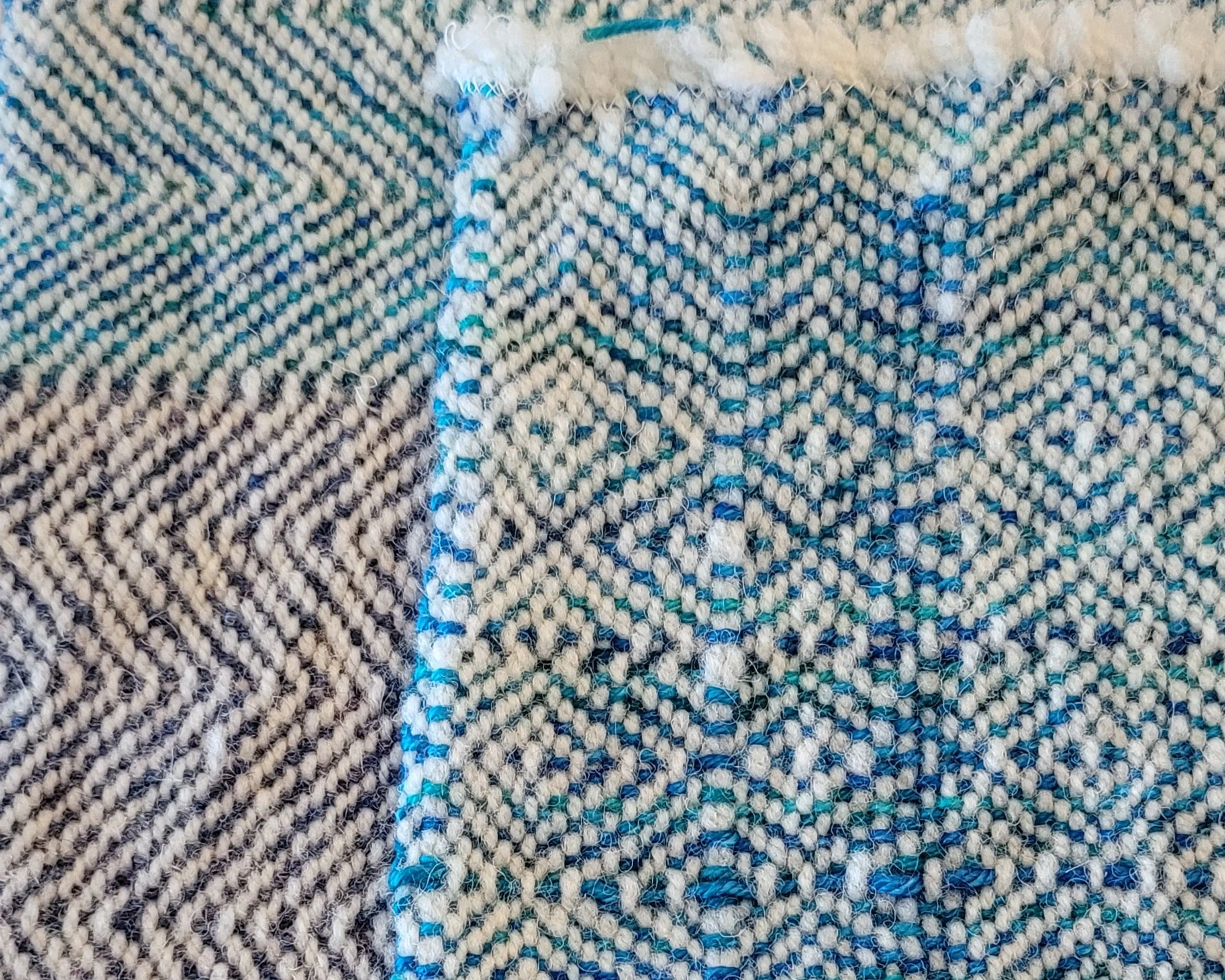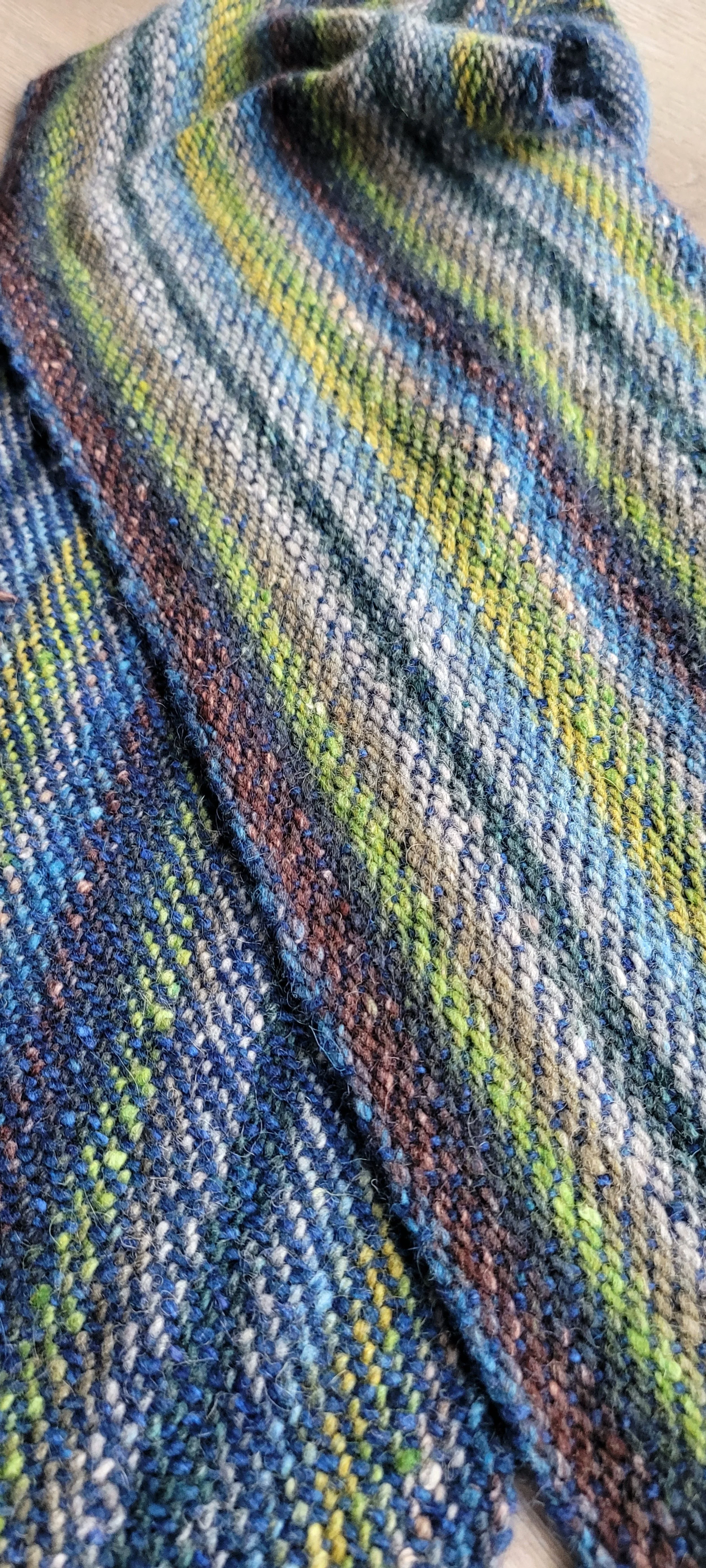Weaving Twill On a Rigid Heddle Part 1
Rigid Heddle Weaving Patterns: Explore Beautiful Weaving Scarf Patterns for Twill Weaving
For the past few weeks I’ve been working on some 2 heddle patterns. This means I’m (re)learning how to use 2 heddles! My plan is to have 3 patterns ready for September classes: Twill, Double Width and 2 heddles for Proper Sett.
Today I’m going to talk about twill. I’ve been focused on sticking to 2 heddles only, no pick-up sticks or string heddles. This allows me to have 3 sheds. Weaving twill with 3 sheds creates a 2/1 twill. This means that the weft goes under 2 warps and over 1.
Three sheds can do a lot! Here are some samples I’ve woven. I’ve been playing with different threadings: 123, 123, 123; 321, 321, 321; 123, 1, 321, 3; 123, 2, 123, 123, 2, 123 and more.
This piece is called a twill gamp. It shows the different threadings and how the pattern forms with different weaving sequences. You can see each section where I changed the threading and the order of the picks (treadling). You can also see where I’ve made mistakes!! Because this was a practise piece, I didn’t go back and fix the mistakes. I did however keep track of the threading patterns and the weaving patterns so I can weave the individual patterns again.
Plain weave is beautiful, and twill on a rigid heddle is a challenge, so why do it? Twill makes for a denser fabric with out losing drape. In fact it is likely to drape better than plain weave. Twill makes a nice fabric for cutting and sewing.
You can tell the difference between twill and plain weave just by looking. Plain weave will look the same on both sides. The weft goes over 1 under 1 and creates a square look. Twill on the other hand will look different on each side. It also has a distinctive diagonal rib pattern. On a well woven twill, the diagonal will be a 45 degree angel. Twill also has a lighter and darker side.
While it’s true threading for twill can test your patience, especially as you are learning, the weaving itself is quite smooth and easy. I like to use painter’s tape to write the weaving sequence and stick it to my reed.
Over the next few posts I’ll be talking more about 2 heddle weaving. Next up, we’ll take a closer look at the threading process.




